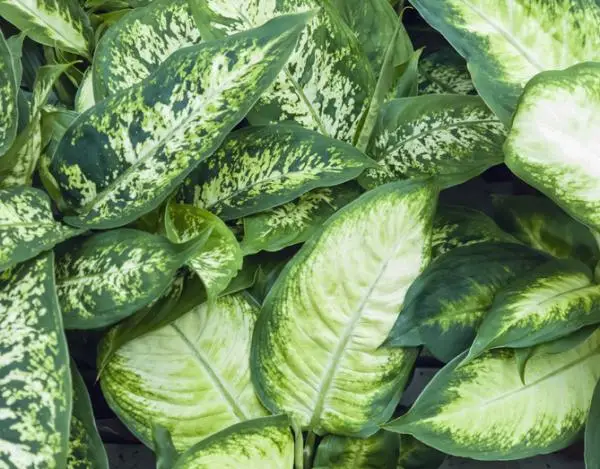You have very likely seen dieffenbachias more than once in any home as a houseplant. These tropical plants are very popular as they thrive in shady conditions and their showy leaves have great decorative value.
If you want to learn more about the dieffenbachia plant and its care , join us in this article, where you can also see some photos of the dieffenbachia plant so that you can appreciate the reasons why it is chosen as a houseplant so often.
What is the dieffenbachia plant: characteristics
Dieffenbachia are a whole genus of plants in the Araceae family, made up of almost 30 different species. Of all of them, only a few are those that are commonly used as indoor plants , among which the dieffenbachia bowmanii stands out . They are native to Central and South America, and are named after the German physician Ernst Dieffenbach.
They are plants that can reach heights of 20 meters, although others do not exceed 3 meters. Its leaves are oval or lanceolate, of a beautiful dark green color with light spots in the center.
Apart from bowmanii, some of the known dieffenbachia species are as follows:
- Dieffenbachia Seguine.
- Dieffenbachia amoena.
- Dieffenbachia stretcher.
- Dieffenbachia maculata.

Dieffenbachia plant: care
These tropical plants are very resistant to closed environments, hence their popularity as indoor plants. However, despite the fact that they are strong and suitable species for beginners, it is worth reviewing the basic care of the dieffenbachia plant :
Light and temperature for dieffenbachia
When it comes to light, dieffenbachia can tolerate being in the shade, although it is advised to place it in bright rooms. If it is exposed to direct sunlight, it will lose its lower leaves, so it is usual to look for a point of semi-shade.
In addition, this plant does not tolerate drastic changes in temperature well, which is another reason why it tends to be grown indoors, where the temperature of the home is more similar throughout the year. Drafts are not good for him either.
Substratum
With the substrate, the most important thing is that it offers good drainage. Substrates with coconut fiber tend to offer very good qualities in this regard, and a bed of gravel or expanded clay at the base of the pot may also help. Of course, the pot also needs to have drainage holes.
Irrigation of the dieffenbachia
When it comes to watering, as it is a tropical plant, it needs the substrate to remain humid, although always without flooding, which would cause damage to its roots. This plant does not tolerate very hard water very well, so if you use tap water, you can soften it by boiling it and letting it sit, or simply by exposing it to direct sun for a while.
Pass
The plant appreciates the doses of fertilizer every 15 days in the warm months and, on the other hand, fertilize at most once a month in the cold months.
Cleaning the leaves of the dieffenbachia
In addition, it is important to clean your sheets with a damp cloth once every two weeks to free them from accumulated dust. Remember that it is always better to clean your blades with gloves.
Is the dieffenbachia plant poisonous?
There are rumors about the toxicity of dieffenbachia that it is highly fatal to people and pets. Although it is true that we are dealing with a toxic plant, its degree of danger is far from that attributed by some, and although it may cause some discomfort or symptoms, it is not a deadly plant , except in very rare and extreme cases in which it is consumed a large amount or suffered from a previous serious state of health.
The first thing to keep in mind is that, obviously, the leaves of the plant should not be ingested . If done by mistake, it could cause aphonia and inflammation, burning and other digestive discomfort, leading to nausea, vomiting or diarrhea in severe cases. In addition, it can cause pain or damage to the eyes, so it is also necessary to avoid touching the eyes after having touched the leaves of the plant, which are those that contain the crystals of the toxic compound. In the same way, it is preferable to handle it with gloves, especially if the contact causes some kind of discomfort to the skin.
Taking all this into account, the plant is only dangerous for small children and pets, who could ingest it by mistake, so if any of them are at home, it is convenient to keep the dieffenbachia out of their reach.

